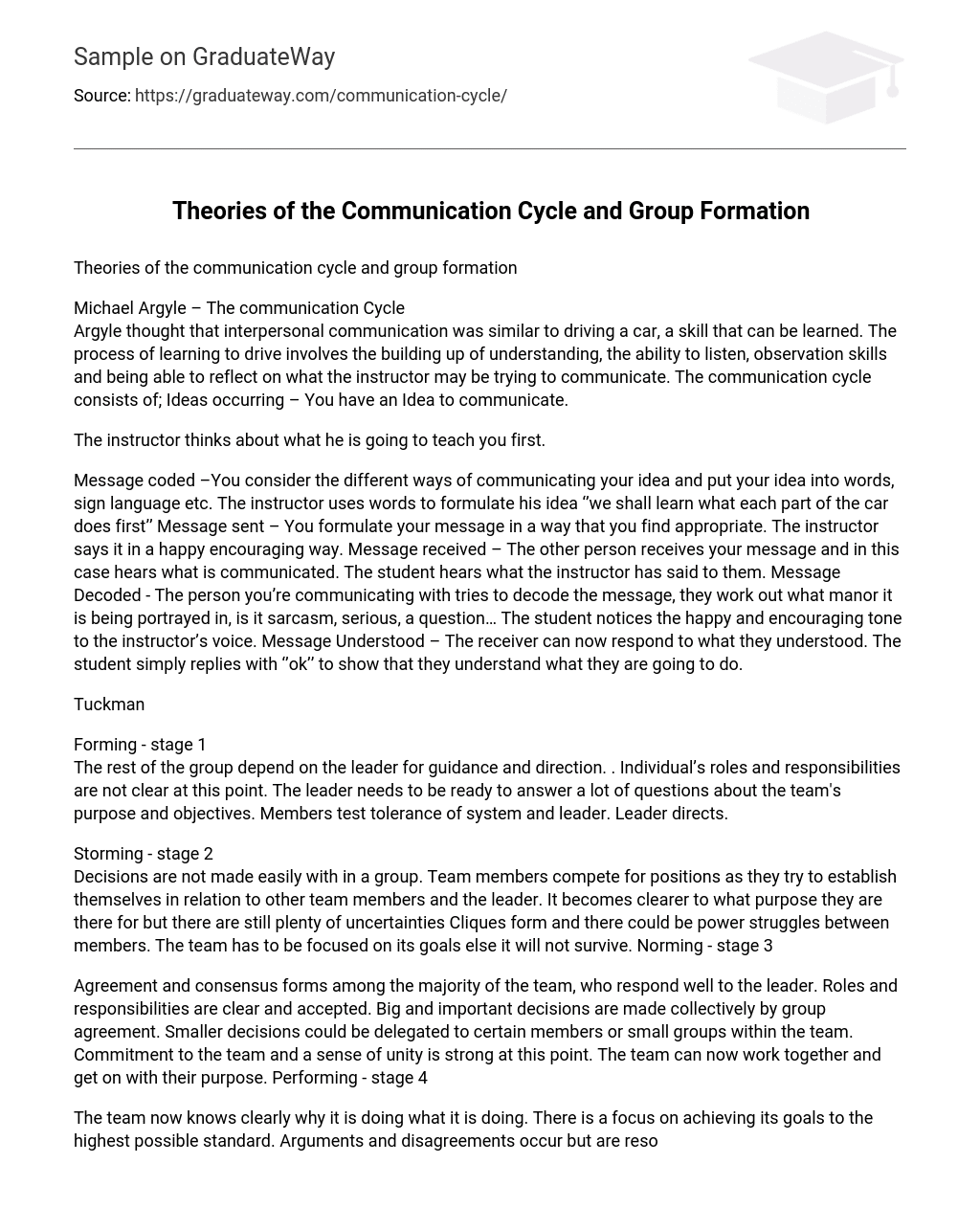Michael Argyle developed the concept of the communication cycle, likening it to the process of learning to drive a car. He believed that interpersonal communication is a skill that can be learned. Similar to learning to drive, effective communication involves understanding, listening, observation, and reflecting on the messages being conveyed. The communication cycle begins with the occurrence of ideas that one wishes to communicate.
The instructor considers the content he will teach you initially.
Message coded: The sender considers different ways of communication and puts their idea into words or sign language. The instructor formulates his idea using words, specifically saying “we shall learn what each part of the car does first.”
Message sent: The sender conveys their message in a manner they find appropriate. The instructor delivers it in a happy and encouraging way.
Message received: The receiver perceives the message, in this case through hearing. The student hears what the instructor says to them.
Message Decoded: The recipient tries to interpret the message, determining its tone and intent (e.g., sarcasm, seriousness, question). The student recognizes the instructor’s voice as happy and encouraging.
Message Understood: Now that understanding has been reached, the receiver can respond accordingly. In this case, the student simply replies with “ok” to demonstrate comprehension of instructions.
Tuckman
At the beginning of group formation, members look to the leader for guidance and direction, as individual roles and responsibilities are not yet established. The leader must be ready to address questions about the team’s purpose and goals. Additionally, during this stage, both members and the leader assess each other’s tolerance levels while the leader assumes control.
Storming – stage 2
Decisions are not easily made within a group. Team members vie for positions, aiming to establish their roles in relation to each other and the leader. The purpose of their presence becomes clearer, yet uncertainties persist. Cliques emerge and power struggles among members may occur. The team must remain focused on its goals to ensure survival. Norming – stage 3
During the Performing stage, the team is united and in sync. They trust and follow the leader’s guidance and have clearly defined roles and responsibilities that they embrace. Major decisions are made collectively through group consensus, while minor decisions may be assigned to individual members or small groups within the team. There is a strong commitment to working together and a feeling of unity among team members. With this foundation established, the team can now collaborate effectively towards achieving their objectives.
The team is committed to achieving its goals with excellence, resolving conflicts and disagreements in a positive manner. This allows the team to focus on both the objective and maintaining strong relationships within the group. There is a sense of mutual assistance and concern among team members. The leader delegates tasks and projects to the team but remains available for support if needed, using Argyle’s communication theory. This phase is referred to as “adjourning” – stage 5.
Tuckman’s fifth stage is the dissolution of the group. It is ideal for this to occur after successfully completing the task, allowing everyone to move forward. It is crucial to acknowledge the vulnerability of members, particularly when they have formed strong bonds and feel insecure due to the change.





